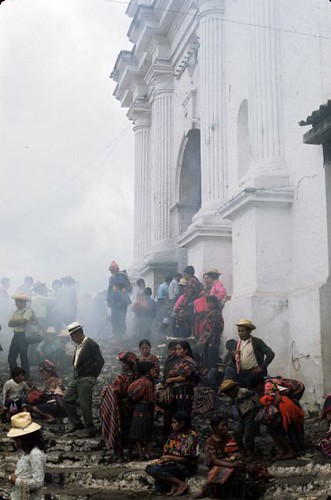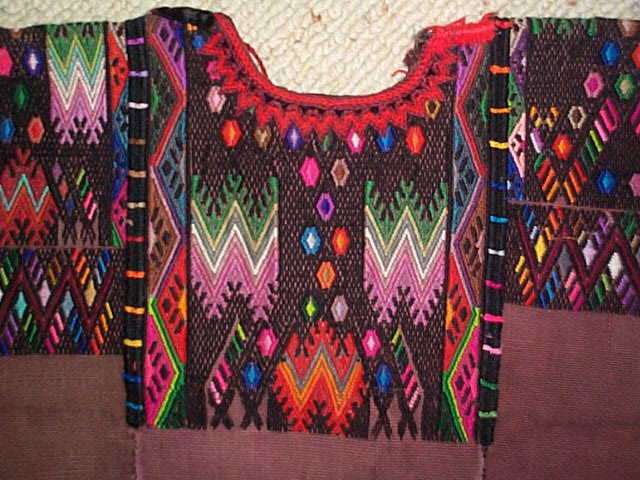Here is a picture of the church. The stairs are part of the original Mayan structure (which is obvious when you're there because they feel much older than the church, which is still quite old - from the 1500's). The smoke is from the Mayan shaman outside the church burning incense.

Here is a picture of the Mayan altar on top of the mountain:
I also got three huipiles that are typical of that area, and they're gorgeous. I'm very happy with my purchases. I honed my bargaining skills and got them for a good price... which is a great deal for something handwoven that takes 3-6 months to make. They're used, too, which to me makes them even more beautiful.
Huipiles are actually quite interesting. They have fashion, just like we do with western clothing. There are different patterns that are popular at different times, and things go out of fashion. Different towns have different patterns that they use, or a particular feature.
For example, this is a typical huipil from Chichicastenango - the brown background, the colors they use, the geometric pattern, and the sun pattern around the neck are all typical to that town. Mine all look similar to this:

And I love this typical huipil style from Sololá, but I've never ever seen one for sale for less than hundreds of dollars. So I figure I'd just come back in 10 years and then there would be a lot of them for sale, because they'd be out of fashion and everyone would be trying to get rid of them. (Typically the huipiles you buy are used, brand new ones on commission are thousands of dollars):

And for another example, this is a typical huipil from Santiago, Lake Atitlán... they have the square pattern with embroidered birds.

And just for more info... hand-woven in this case means woven on a backstrap loom, which is an ancient process for the Maya. Each huipil is made out of two or three of these hand-woven canvases. I find it really impressive.




1 comentario:
Hi Liz! It's me, Tanya! I'm here! Wow, these pictures could be in National Geographic. The huipiles are beautiful, as is the church. It's amazing to see the people wearing such different clothes and it must be almost like stepping through a time warp at times. It must be such a priceless experience for you and for Terry.
I'm really enjoying your updates so far. Please keep 'em coming!
Publicar un comentario